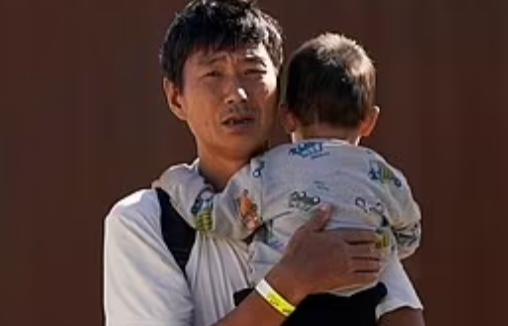
The US border is being inundated with Chinese nationals as migrant caravans from Latin American increasingly attract asylum seekers from around the world.
Over the 2023 fiscal year, which ended in September, US Customs and Border Protection reported 24,048 Chinese citizens were apprehended at the Mexico border.
That’s up more than 10 times from the 1,970 arrests recorded during the 2022 fiscal year, and just 323 the year before, when China was under strict pandemic travel bans and lockdowns.
{snip}
Border Patrol arrested 41,719 Indian migrants crossing from Mexico in fiscal year 2023, up 129 percent on the previous year. Some 7,390 Russians were captured, up by 42 percent, while 15,429 Turks were detained, roughly flat from the prior year.
Among nations not categorized by CBP, because they are traditionally not a significant source of illegal immigration, a total of 148,471 migrant were arrested at the southern border last fiscal year, three times more than the year before. This includes many countries in the Middle East and Africa.
In total, Border Patrol apprehended 2,045,838 migrants at illegal crossing points on the southern border in the 12 months through September, and another 429,831 were expelled at ports of entry, for the highest annual total on record.
The surge in migrants attempting to enter the US underscores the scale of the humanitarian crisis at the border, and the political challenge it presents for President Joe Biden as he seeks re-election in 2024.
The influx of migrants from China follows years of draconian pandemic restrictions in that country, which threw the economy into disarray and shattered confidence in the ruling Communist Party.
Chinese asylum-seekers who spoke to the Associated Press in a recent article say they are seeking to escape an increasingly repressive political climate and bleak economic prospects.
{snip}
‘I feel nothing,’ Deng said in the San Diego parking lot where Border Patrol agents dropped him off after processing. ‘I have no brother, no sister. I have nobody.’
Chinese migrants are often relying on a relatively new and perilous route through Panama’s Darién Gap jungle that has become increasingly popular with the help of social media, where posts and videos provide step-by-step guidance.
Chinese people were the fourth-highest nationality, after Venezuelans, Ecuadorians and Haitians, crossing the Darién Gap during the first nine months of this year, according to Panamanian immigration authorities.
The pandemic and China’s COVID-19 policies, which included tight border controls, temporarily stemmed an exodus from the country that rose dramatically in 2018 when President Xi Jinping amended the constitution to scrap the presidential term limit.
{snip}
‘This wave of emigration reflects despair toward China,’ Cai Xia, editor-in-chief of the online commentary site of Yibao and a former professor at the Central Party School of the Chinese Communist Party in Beijing.
‘They’ve lost hope for the future of the country,’ said Cai, who now lives in the U.S. ‘You see among them the educated and the uneducated, white-collar workers, as well as small business owners, and those from well-off families.’
The Darien Gap route is viable for Chinese immigrants because they can fly into Ecuador without a visa.
From Quito, they join Latin Americans to travel through the once-impenetrable Darién Gap and across several Central American countries before reaching the U.S. border.
The journey is well-known enough it has its own name in Chinese: walk the line, or ‘zouxian.’
Short video platforms and messaging apps have popularized the route.
They provide on-the-ground video clips and step-by-step guides from China to the US, including tips on what to pack, where to find guides, how to survive the jungle, which hotels to stay at, how much to bribe police in different countries and what to do when encountering U.S. immigration officers.
Translation apps allow migrants to navigate through Central America on their own, even if they don’t speak Spanish or English.
Short video app Douyin, owned by TikTok owner ByteDance, is one of the main sources of the Chinese tech giant’s revenue overall, Reuters previously reported.
One Chinese migrant told Reuters she came across ‘Baozai,’ an internet personality who gained tens of thousands of followers on Douyin, Xigua Video, YouTube and Twitter by posting videos about his migration to the United States.
{snip}
An April 7 Twitter post from an account called Lee Gaga said smugglers mark the location of US Border Patrol agents on maps and advise migrants on how to surrender to them. In posts and in messages exchanged with Reuters, the Twitter user identified as Lee Gaga said he was now in the New York City area after a 37-day journey.
‘Of course you can try and run, but that’s not recommended,’ the post said. Twitter is blocked in China, but users may be able to access the platform through VPNs, or virtual private networks, that allow internet users to access overseas sites barred by authorities.
The Twitter poster went on: ‘I was released only after three days and three nights. I got lucky because the border policy has been good lately.’
* Original Article:
https://www.dailymail.co.uk/news/article-12699675/amp/US-border-China-migrants-caravan.html?ito=smartnews


